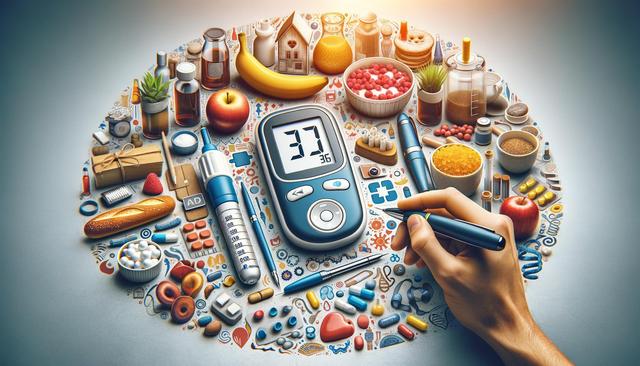Understanding Blood Sugar Fluctuations
Blood sugar levels can shift for many reasons, and for individuals managing diabetes, understanding these shifts is critical. The body’s ability to regulate glucose depends on a delicate balance of insulin, activity, food intake, and mental well-being. When this balance is disrupted, it can lead to symptoms such as fatigue, excessive thirst, frequent urination, or blurry vision—signs your blood sugar is too high. Recognizing these symptoms early can help prevent more serious complications.
There are several hidden causes of high blood sugar that many people overlook. These include dehydration, infections, and even certain medications unrelated to diabetes. Lifestyle factors also play a major role. Skipping meals, irregular eating patterns, and lack of physical activity can all contribute to blood sugar instability. Paying attention to your body and its signals helps you stay ahead of potential problems.
Common Triggers of Diabetes Flare Ups
Identifying the common triggers of diabetes flare ups can help you reduce their frequency and severity. While each person’s body responds differently, some causes are widely recognized by healthcare professionals and patients alike. These include:
- High-stress levels, which can increase cortisol and raise blood sugar
- Poor sleep, leading to insulin resistance and impaired glucose tolerance
- Missed or incorrect doses of diabetes medications
- Infections or illnesses that place additional stress on the body
- Foods that spike blood sugar in diabetes, such as sugary drinks or refined carbohydrates
Awareness of these triggers allows for proactive management. For example, developing a consistent sleep routine and practicing stress-reducing techniques like meditation or light exercise can be effective. It’s also important to follow a clear schedule for medications and meal times, minimizing chances of sudden glucose spikes or drops.
Smart Nutritional Choices to Stabilize Blood Sugar
Diet plays a central role in managing diabetes. Choosing the right foods can help prevent high blood sugar episodes and maintain energy throughout the day. Some foods are known to have a high glycemic index and cause rapid increases in glucose levels. Being mindful of these foods that spike blood sugar in diabetes is essential. Examples include:
- White bread and pastries
- Sugary beverages
- Processed snacks like chips and crackers
- Sweetened breakfast cereals
Instead, opt for foods that release glucose slowly, such as whole grains, legumes, nuts, and non-starchy vegetables. Incorporating high-fiber options and healthy fats can also help stabilize blood sugar. Additionally, many people find that using the best supplements to stabilize blood sugar—such as those containing magnesium, alpha-lipoic acid, or cinnamon extract—can complement a balanced diet. However, it’s important to consult a healthcare provider before starting any supplement regimen.
The Role of Physical Activity and Routine
Establishing a consistent routine that includes regular physical activity can significantly improve blood sugar control. Exercise helps the body use insulin more efficiently and can lower blood glucose levels. Activities don’t need to be intense; even moderate exercise, like brisk walking, yoga, or swimming, can offer benefits. The key is consistency and choosing something enjoyable to stay motivated.
Creating a daily routine that incorporates movement, regular meals, and time for relaxation can help mitigate the common triggers of diabetes flare ups. This routine supports your body’s natural rhythms and makes it easier to spot when something is off. Tools like glucose monitoring apps or wearable fitness trackers can provide helpful data to keep you on track.
Monitoring and Adjusting Based on Personal Patterns
Every individual with diabetes experiences it differently, so personal awareness is essential. Monitoring blood sugar levels regularly helps identify patterns and triggers that may not be obvious. For example, someone might discover that their blood sugar spikes after eating a certain food or during periods of high stress. Tracking these occurrences can help adjust lifestyle habits and treatment plans accordingly.
Working with a healthcare provider to customize your treatment is also important. They can help interpret the data from your glucose logs, recommend dietary changes, and suggest the best supplements to stabilize blood sugar based on your specific needs. Understanding hidden causes of high blood sugar and being vigilant about potential signs your blood sugar is too high allows for more responsive and informed decision-making.
Conclusion
Staying ahead of blood sugar fluctuations involves more than just medication—it’s about lifestyle, food choices, stress management, and self-awareness. By recognizing the common triggers of diabetes flare ups and learning which foods to avoid, you can take meaningful steps toward more stable blood sugar levels. Incorporating regular physical activity, quality sleep, and possibly targeted supplements into your routine may also support better outcomes. With careful attention and consistent habits, managing diabetes becomes a more achievable part of everyday life.




Leave a Reply